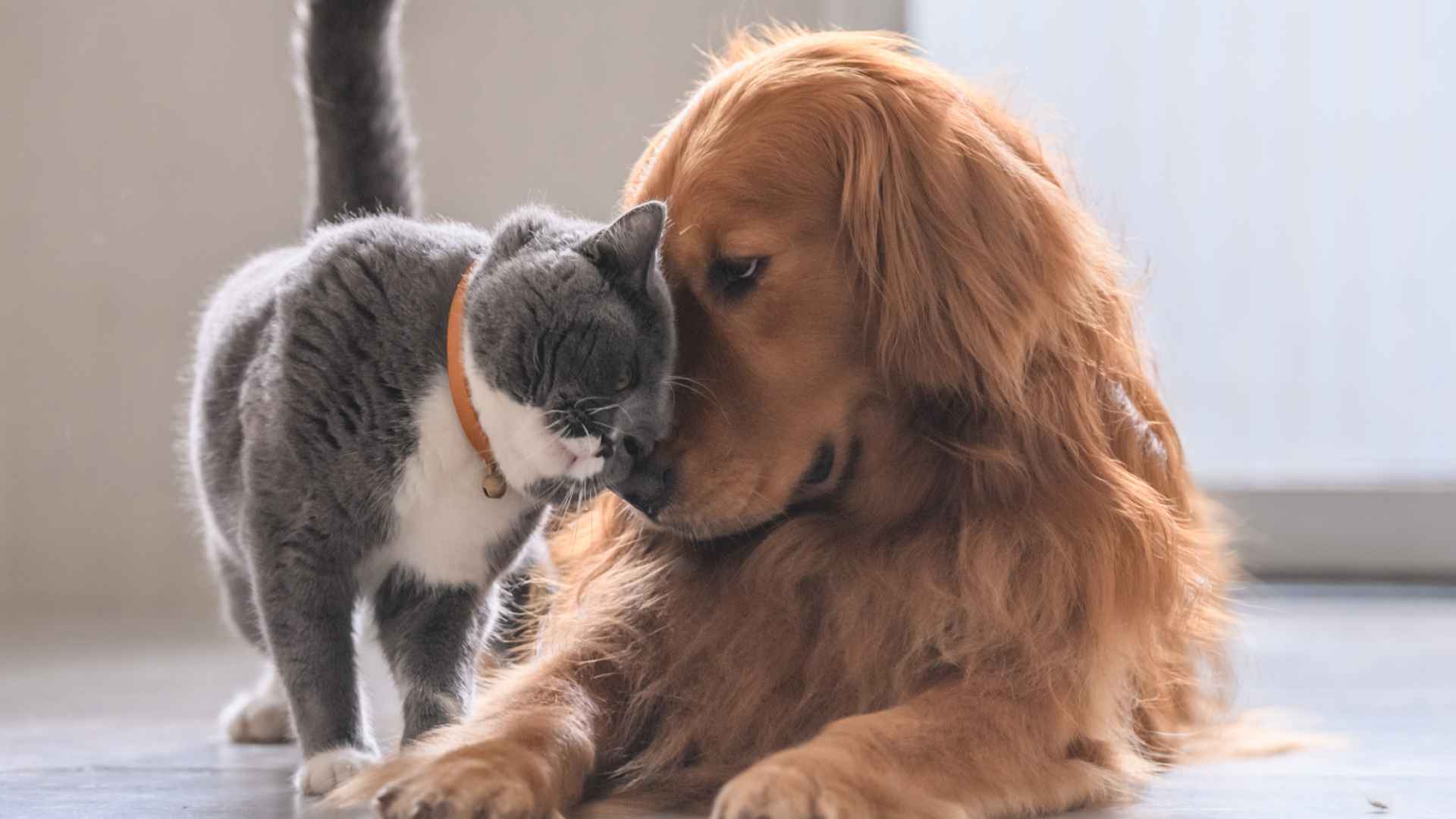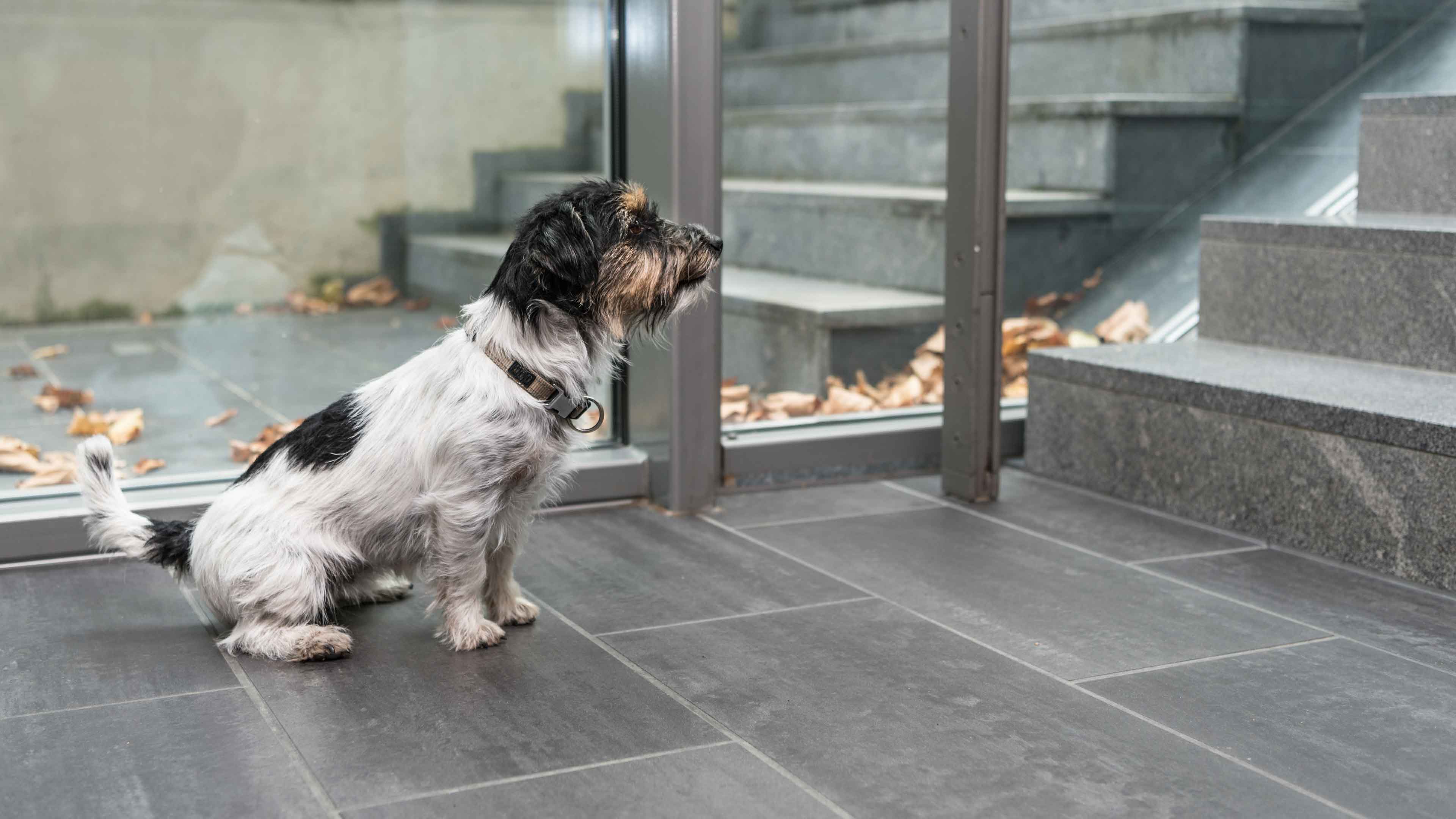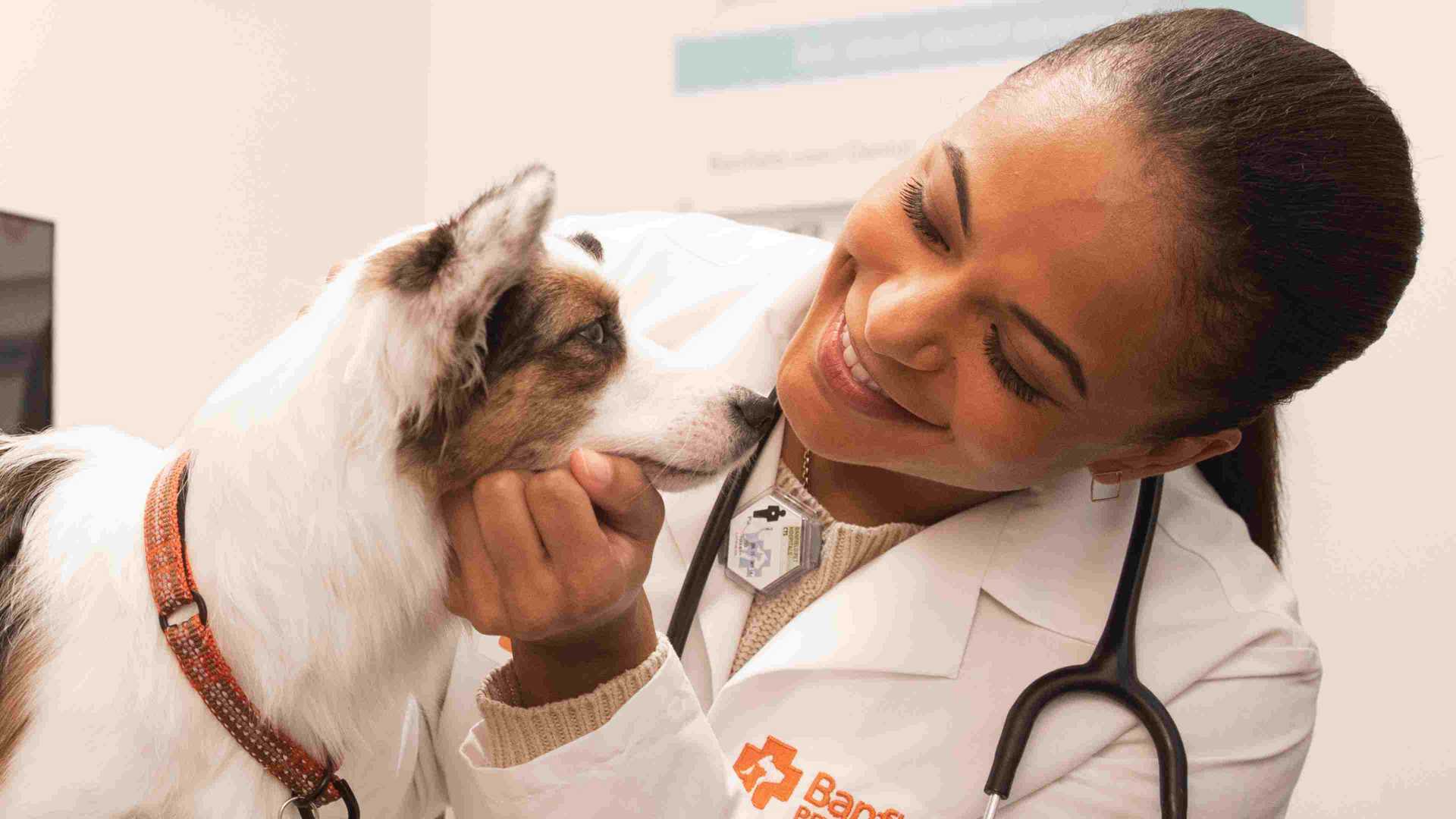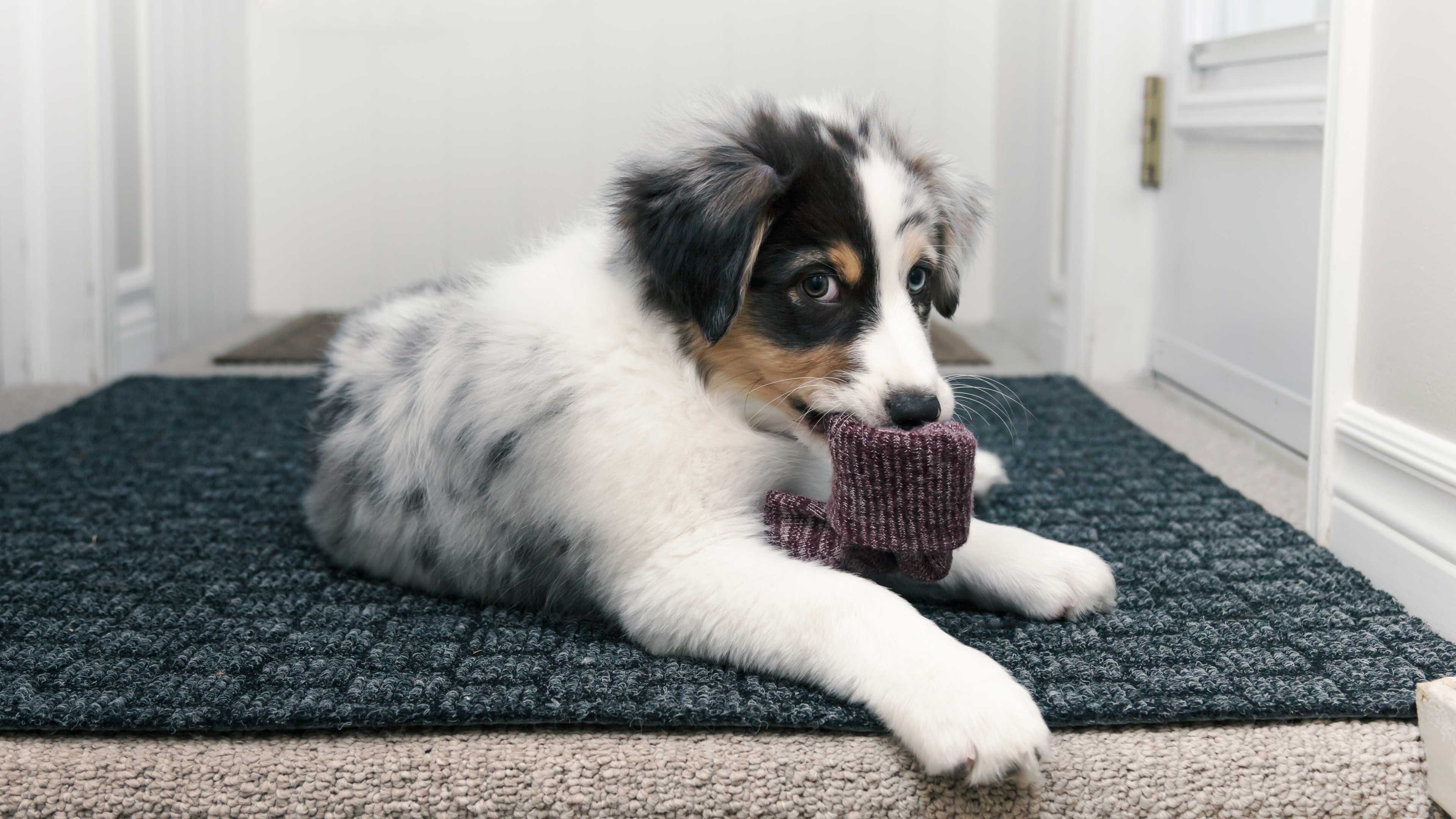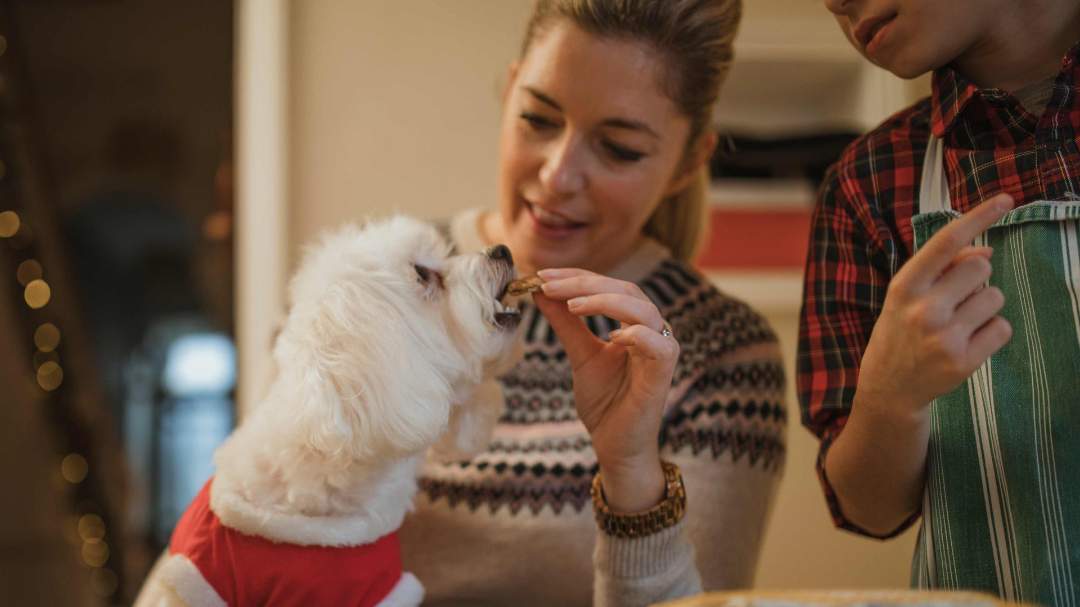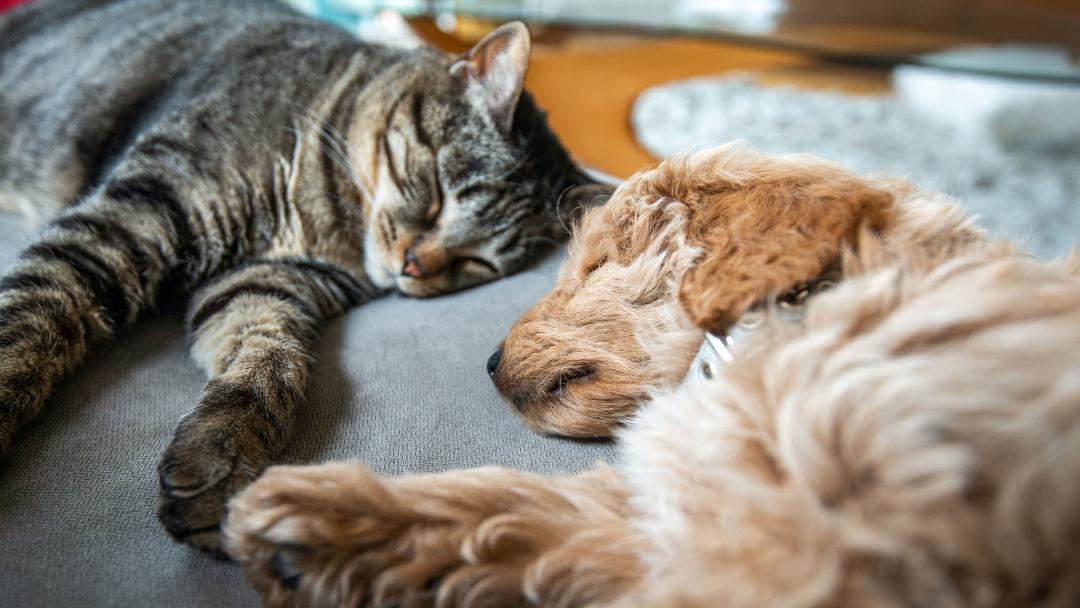cat and dog friends
You love pets. So much that one isn’t enough for you. Who could blame you? Solution: adopt another pet. Easy, right? Maybe. But if you’ve already got some furry friends at home, it could be a bit more complicated. Yes, it’s possible that you might be introducing your pets to a new BFF, but with animals, bonds sometimes take time.
Before you even get started, make an appointment with your Banfield Pet Hospital® veterinary team to ensure that your new pet is healthy. That helps minimize the risk that they'll bring anything infectious into your home. Next, use the following tips to introduce pets safely and help them become instant friends – or at least get along pretty well.
Dog meet dog
If any of the dogs have behavioral issues, you’ll want to consider involving professionals so everyone stays safe. However, if your dogs are generally social, you have the power to help create a safe and comfortable connection. Do the introduction in neutral territory, outside, because your house will smell like your existing dog. Find a calm environment, such as an empty sidewalk or quiet park. Also, be sure to keep everyone on a leash.
To start, keep the dogs close but not too close and let them sniff the other’s scent. Think of sniffing like a doggy handshake – the essential first step to a new relationship (at least before social distancing started). If either dog shows aggression, you may need a professional trainer on hand before they can meet safely. Hopefully during this period you’ll see signs of interest and confidence, like wagging tails, held high.
If the first step goes well, gradually increase their time together, but keep a sharp eye out for any signs of stress or aggression. Be ready to intervene if things get tense, and reinforce good behavior. Cheer them on! They’ll pick up on your energy.
Ideally, a few of these successful outdoor meetings will ease the transition into your home. The key is taking it in stages and never moving on when things don’t feel right. And remember: when it’s time for both pets to be inside, even the best pups may get territorial – most commonly about food, toys, and people. So try to hide some of your dog’s most treasured belongings, and make sure you have good, confident control over both dogs.
If you see any signs that concern you, contact your Banfield Pet Hospital veterinary team or consult with a licensed trainer or behaviorist.
Introducing a cat to a cat
Cats don't love big changes, so taking it slow is key. Limiting your new cat to a single room in the house (full of everything they need) will ease them into things and give them a safe space to return to. The initial intro between cats can be made on opposite sides of the door to this room by placing their food bowls nearby. When sensing each other through the door, initial prickling is normal (some growls or caution) but they’ll hopefully grow used to their new housemate’s smell.
If everything is going well, the next step is to let them see but not touch each other; a baby gate can help make this easier. If any step results in continuous cat distress, they may never be ready to meet. This process can take several weeks but with cats, don’t rush it. Eventually they will likely be ready to meet without any barrier between them.
Even if everything goes relatively well, some hissing and swatting is normal during first contact. Cat politics are complex. Let them work it out and try not to intervene unless there’s a risk of injury. If their initial meetings are relatively calm, you’re on the right track! Cats generally take time to adjust to changes in environment and in companions. However, if given enough time and space to adapt, plus lots of love and attention, they could be bonding in no time.
Oh, and don’t forget to get more litter boxes – at least one for each floor of the house and at least one for each cat, plus one more for good measure.
Feline/canine friendship
When introducing inter-species pairings, keep in mind many of the tips we’ve already covered. Introducing in stages, similar to when cats meet cats, is a good place to start. Let them smell each other through a door for several days to help them grow accustomed to their new potential friend.
When meeting, keep your pup on a leash and supervise everything so that all parties are safe. Take it as slow as you need to, keeping initial meetings short, ending them if things get intense, and ensuring that your cat has an accessible safe-zone to flee to if they get overwhelmed. Depending on your cat’s attitude, you might want to make sure the dog has a safe-zone, too.
In time, supervised meetings can become longer. If, after a long time, your cat and dog still can’t coexist, the match might not be right. The reality is that sometimes, pets just aren’t compatible. But by introducing them slowly and letting all pets know they can retreat to a safe space, you can set them up for short-term tolerance and, ideally, long-term friendship!
Listen to your pets' behavior, respect it, and ask professionals at Banfield Pet Hospital if you need help. Hopefully, you'll soon have a pair of lifelong friends. It's true that the love shared between a bonded pair of animals is unlike any other, but equally fulfilling is your bond with your pets. Now that is a best-friendship for the ages.
 Mites and mange
Mites and mange Podcast - Not Just Fluff
Podcast - Not Just Fluff
